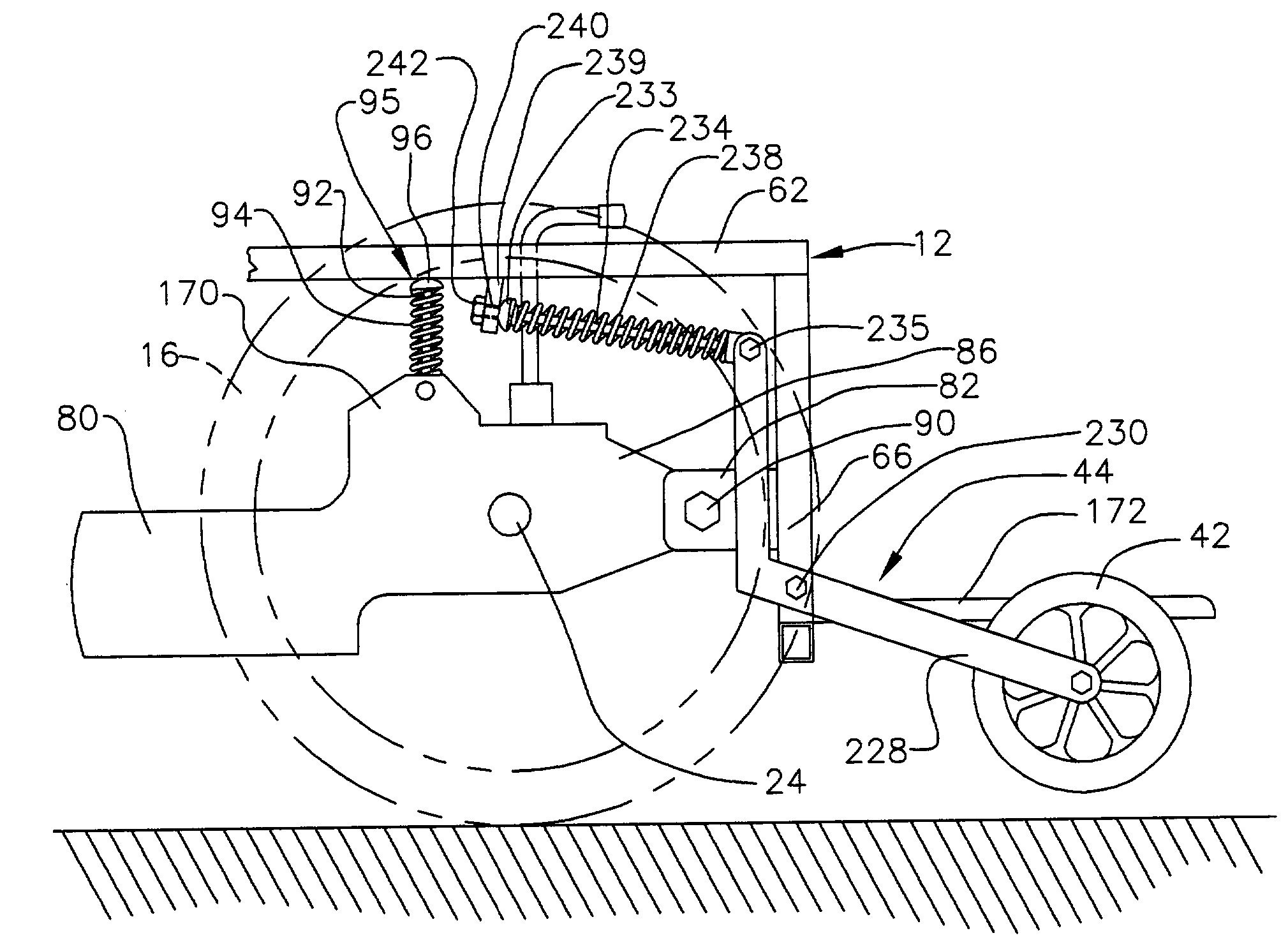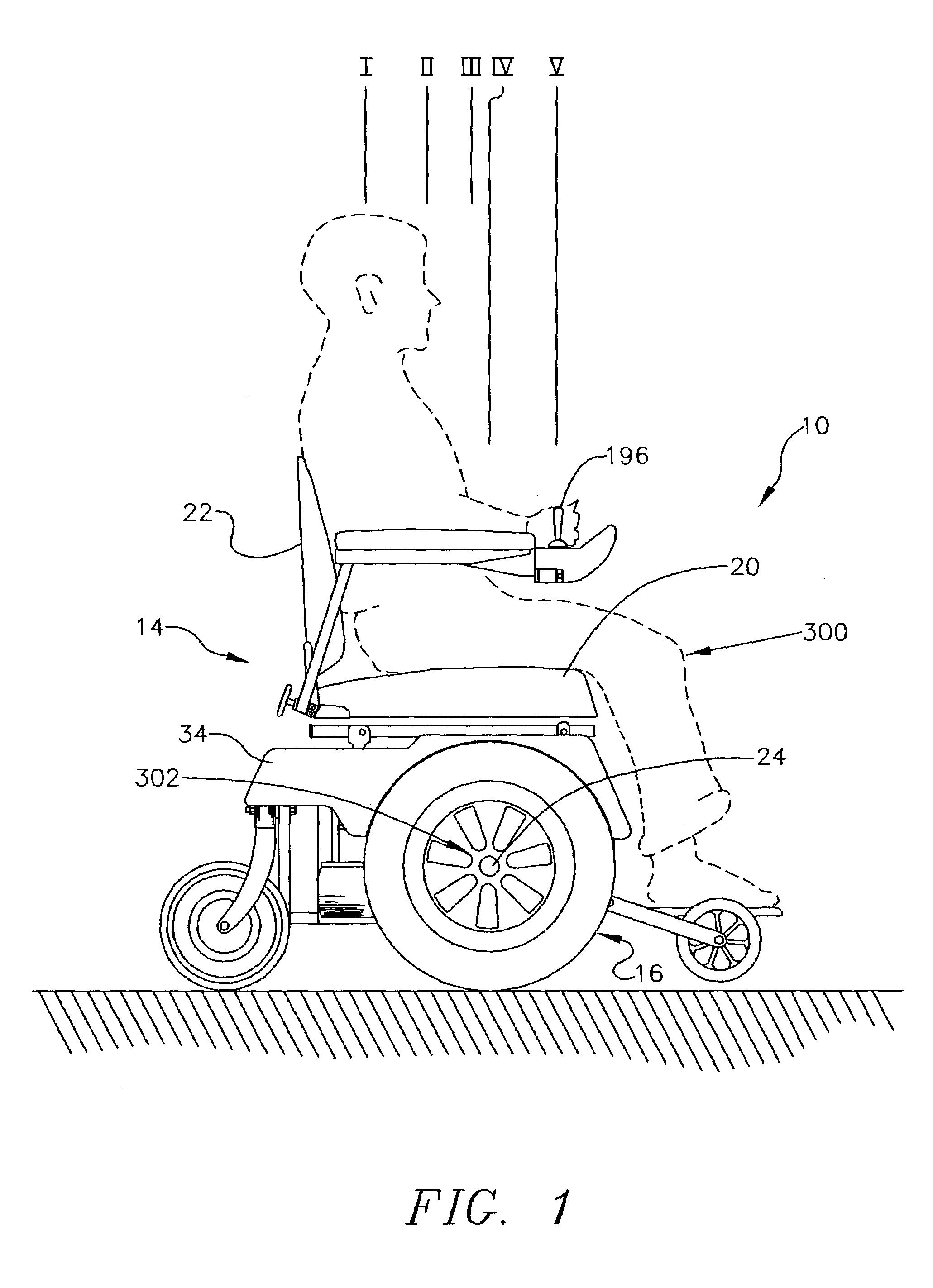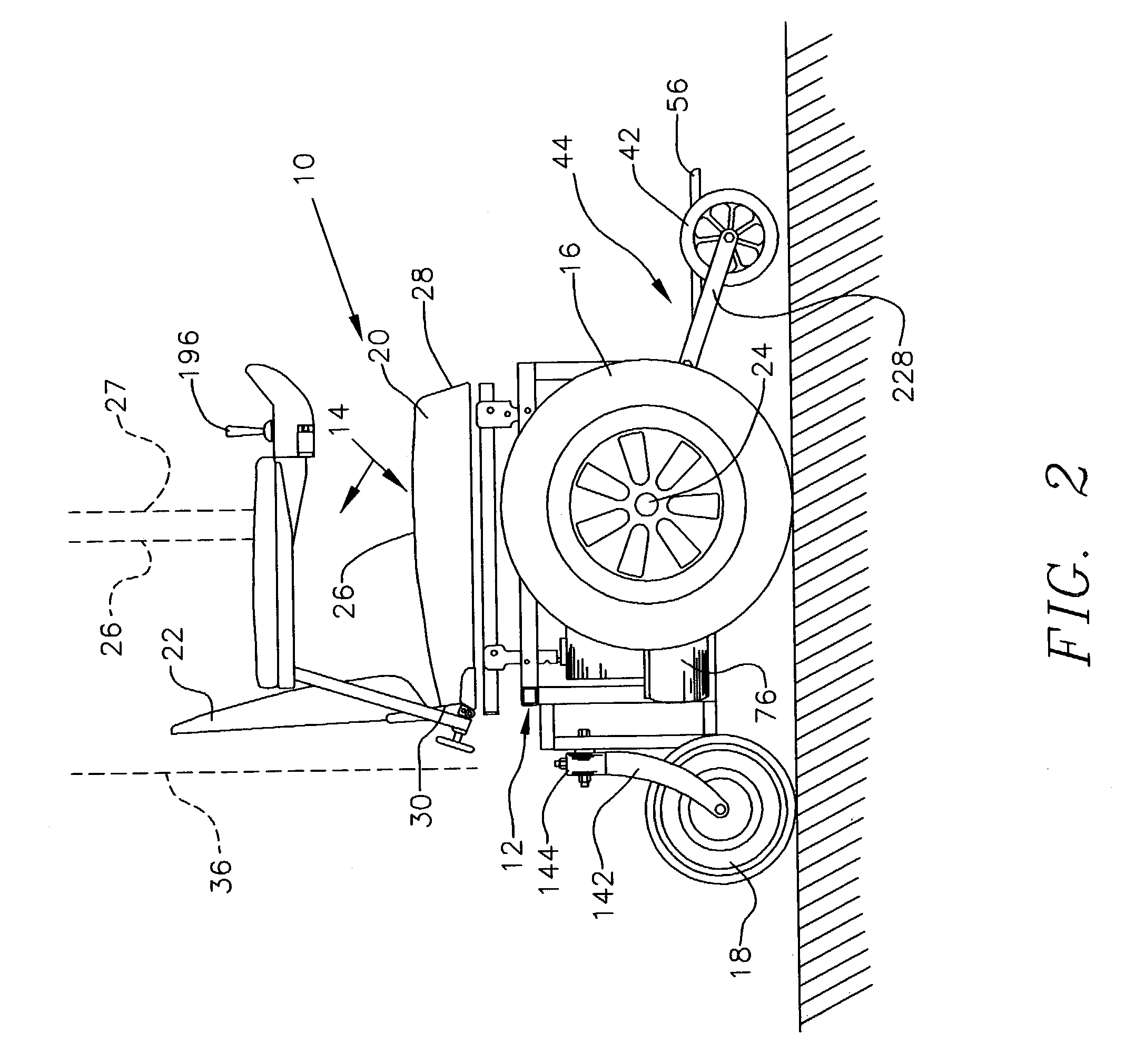Power wheelchair
a wheelchair and power technology, applied in the field of wheelchairs, can solve the problems of unnecessarily forward extension, common deficiency, and injury of the handicapped person under certain conditions
- Summary
- Abstract
- Description
- Claims
- Application Information
AI Technical Summary
Problems solved by technology
Method used
Image
Examples
Embodiment Construction
[0019]Referring to the drawings in general and to FIGS. 1 through 6 in particular, where like numerals identify like elements, a power wheelchair illustrating certain aspects of the invention is shown and is designated generally by the numeral 10. Power wheelchair 10 includes a frame designated generally as 12, and a seat designated generally as 14 supported by frame 12. A pair of drive wheels, each of which is designated generally as 16, are rotatably connected to frame 12 and are rotatable about transverse axes under a central portion of seat 14.
[0020]As fully described in U.S. Pat. No. 5,944,131, the disclosure of which is incorporated herein by reference, human beings have a center of perception located within the skull, referred to herein as the “cranial center of perception.” This cranial center of perception is generally perceived by a person to be located behind one's eyes, centrally located from left to right within the head and at a front to back location approximately eve...
PUM
 Login to View More
Login to View More Abstract
Description
Claims
Application Information
 Login to View More
Login to View More - Generate Ideas
- Intellectual Property
- Life Sciences
- Materials
- Tech Scout
- Unparalleled Data Quality
- Higher Quality Content
- 60% Fewer Hallucinations
Browse by: Latest US Patents, China's latest patents, Technical Efficacy Thesaurus, Application Domain, Technology Topic, Popular Technical Reports.
© 2025 PatSnap. All rights reserved.Legal|Privacy policy|Modern Slavery Act Transparency Statement|Sitemap|About US| Contact US: help@patsnap.com



